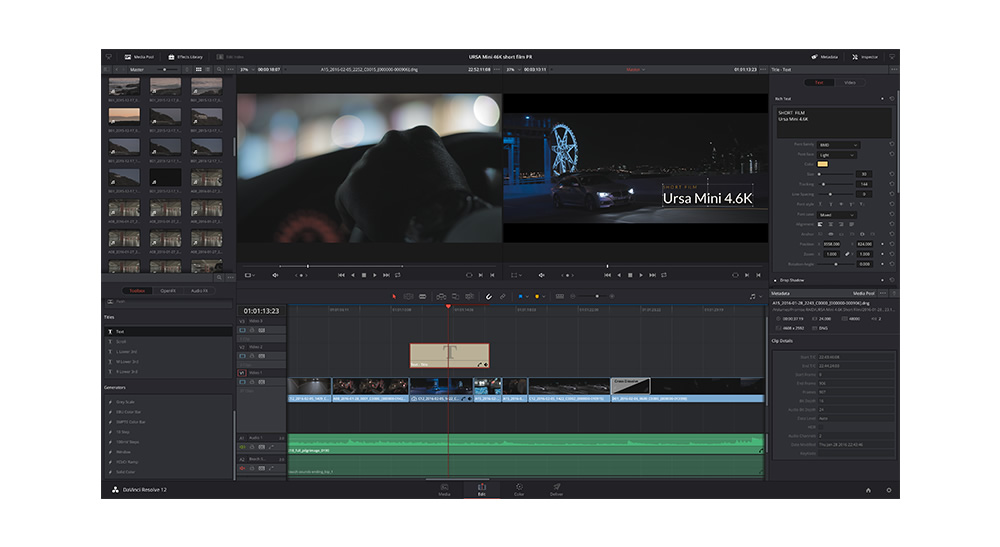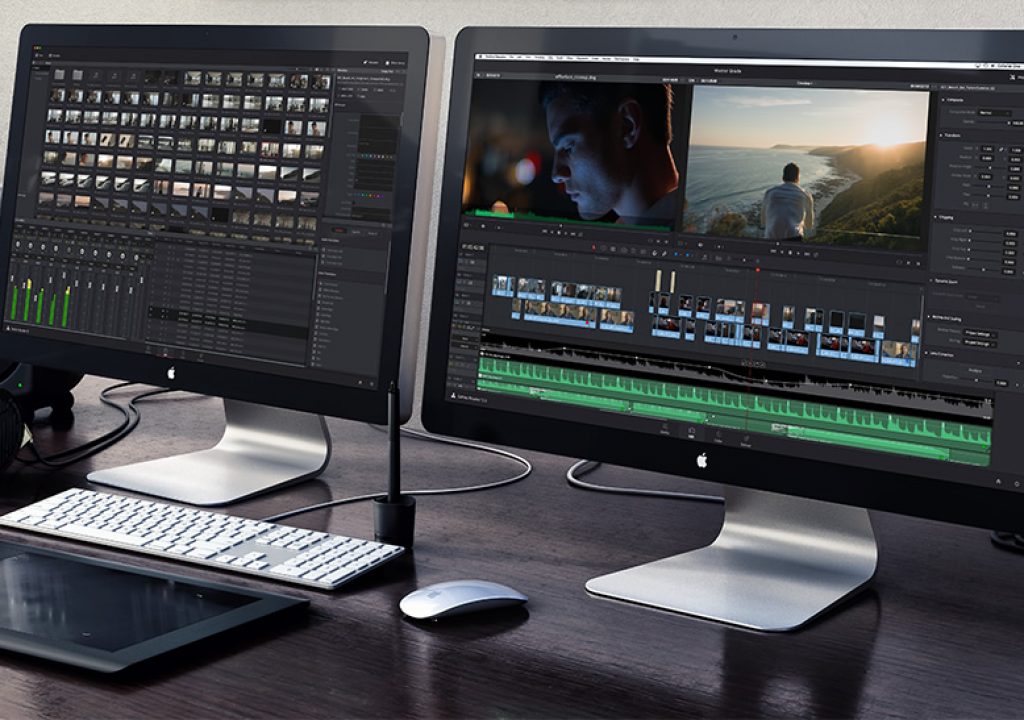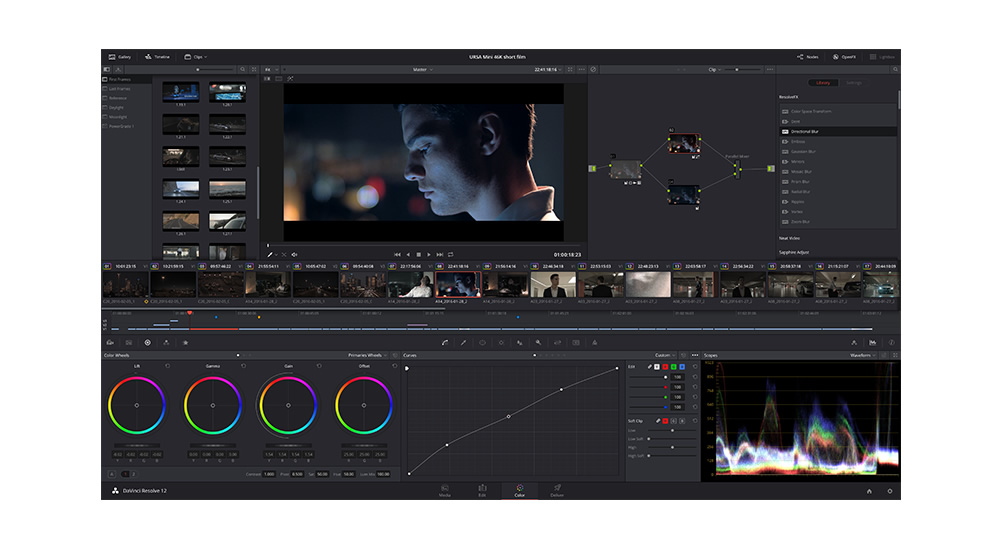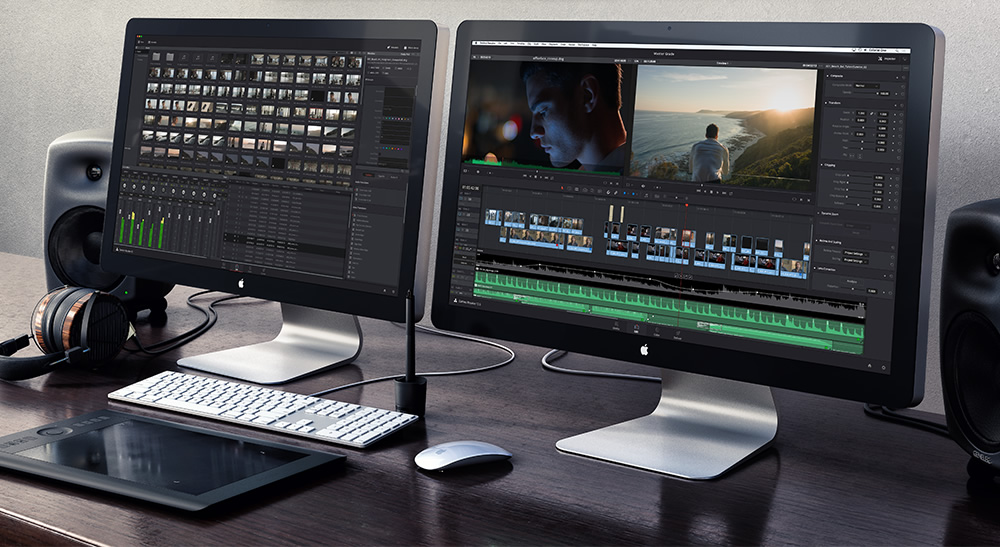Time over time Blackmagic has marched forward with improving DaVinci Resolve. Make no mistake, they want to turn their wonderful color correction program into your favorite non-linear editor. Can you blame them? To me, this makes perfect sense from a company who wants to continue making waves in the stale standard operating procedure of the rest of the industry.
This update is massive with over 1,000 improvements and 250 new features including, no surprise here, major additions to the editing toolset. A few notable improvements include new and enhanced color features and improved HDR support. Most of the changes came from editor suggestions. Clearly it’s a bonus when a company listens to their customers. Now, you are faced with two choices: Watch an hour-long video of Paul Saccone detailing the many changed in DaVinci Resolve 12.5, or continue reading for the highlights.
EDITING FEATURES ADDED
DaVinci Resolve 12.5 adds several new editing features like trimming features allowing swap and shuffle edits. Actually, you’ll find seven new trim operations: head trimming, tail trimming, ripple cut, past insert, expanded edit overly with ripple overwrites, append edits among the many new changes.
 One of my favorite new features, and is just a brilliant addition, is the ability to navigate clips using audio waveforms. The source monitor has a audio waveform overlay allowing editors to see the audio and the video simultaneously. By using audio spikes or silent areas, this feature seems to be an incredibly fast way to find the best edit points. No more scrubbing back and forth on a clip in a timeline to get the exact edit you want.
One of my favorite new features, and is just a brilliant addition, is the ability to navigate clips using audio waveforms. The source monitor has a audio waveform overlay allowing editors to see the audio and the video simultaneously. By using audio spikes or silent areas, this feature seems to be an incredibly fast way to find the best edit points. No more scrubbing back and forth on a clip in a timeline to get the exact edit you want.
Resolve 12.5 also introduces ResolveFX. This is a new framework for native GPU and CPU accelerated effects. The release includes plug-ins like GPU accelerated color space and gamma transformations, lens blur, light rays, emboss, dent, vortex, mirrors, gaussian blurs, glows, ripples, and many more. DaVinci 12.5 Studio includes more advanced ResolveFX tools like film grain, lens blurs, and flares.
One of the biggest new additions is the Fusion Connect feature allowing editors to send clips to Fusion for visual effects. Fusion is Blackmagic’s advanced node based 3D compositing, visual effect, and motion graphics software. When an editor renders his clips out of Fusion those clips will automatically show up in DaVinci Resolve. This is a great addition and will help editors and colorists work a little bit faster.
DaVinci Resolve & HDR
With the release of DaVinci Resolve 12.5 Blackmagic is the only company to offer complete end to end HDR workflow from shooting on set to editing in post production. The 4.6K URSA Mini is already set to shoot with latitude needed for HDR work, and DaVinci Resolve 12 already had been used to grade HDR contents so it’s a no-brainer these two would be optimized for HDR in the DaVinci Resolve 12.5 update.
For those using DaVinci Resolve for Coloring, 12.5 introduces major enhancements to the node editor. Now it’s possible to navigate between nodes, swap nodes, select multiple nodes with a lasso, copy node contents, extract nodes, use embedded alpha channels in mattes and more. When dragging a saved grade from the gallery, editors and colorists have the option to drag their grade as a single compound node, or as a fully expanded node tree. This allows colorists to work faster, and makes it more intuitive for video editors who are learning use DaVinci Resolve. In addition, there are new temperature and tint sliders added to the primary grading controls, more XRite Colorchecker charts supported in the color match palette, and editors/colorists can now select and modify multiple control points at the same time when working with power curve windows. For someone who probably uses way too many power windows this is a great bonus.
Better Noise Reduction
DaVinci Resolve 12.5 Studio users will get improved spatial noise reduction which uses a superior multi GPU accelerated algorithm to reduce noise while retaining incredible detail. DaVinci Resolve 12.5 Studio editors also get a new automatic correction tool for fixing barrel, pin cushion or perspective lens distortion, along with high quality de-interlacing, support for camera LUTs, the DaVinci color transform language (.dctl), and the ability to create ProRes remote render jobs on Windows machines.
Deliver Page
The deliver page has been completely redesigned so now it’s easier to find presets, customize render settings and organize jobs. The new icon browser lets customers see and select output presets which include a new Premiere Pro export, along with presets for ProTools, Avid, Final Cut Pro, Vimeo, YouTube and more. In addition, audio can now be output independently of video as single or multichannel files, and clips can be exported with an alpha channel when using supported codecs such as ProRes 4444, ProRes 4444 XQ and uncompressed RGBA.
As someone who uses DaVinci Resolve on a nearly everyday basis, these improvements are all exciting. Remember, this has to be the best free NLE and color corrector out in the wild. I look forward to seeing what Blackmagic will add to DaVinci Resolve in the future.

Filmtools
Filmmakers go-to destination for pre-production, production & post production equipment!
Shop Now















